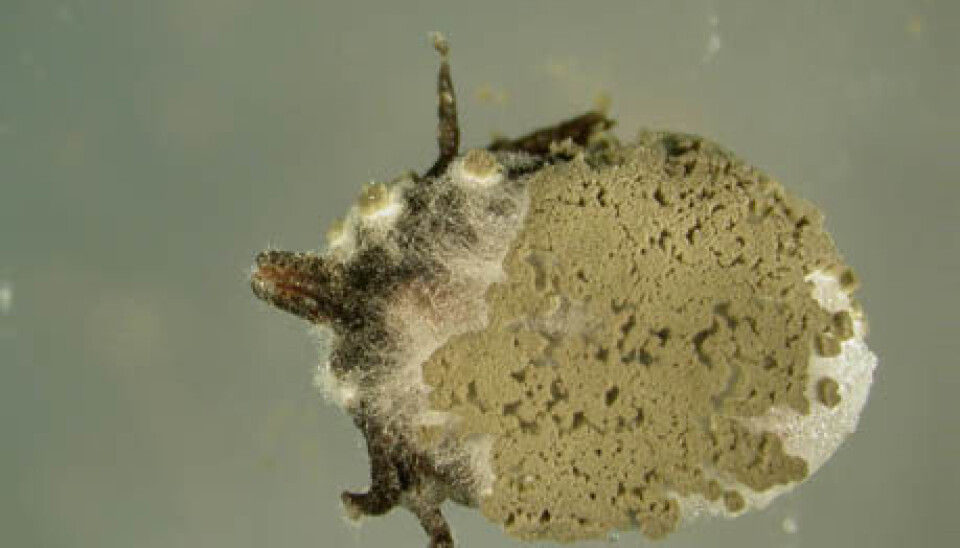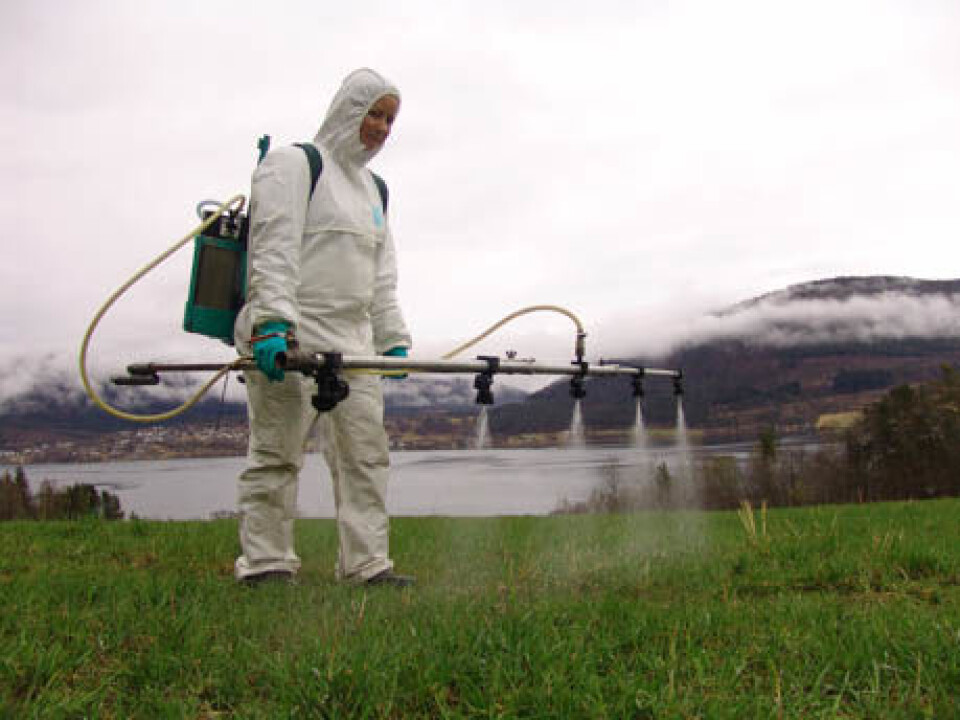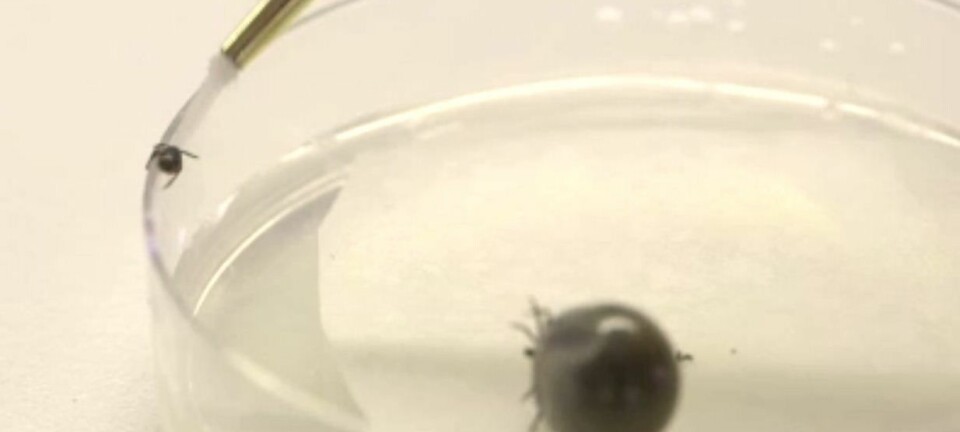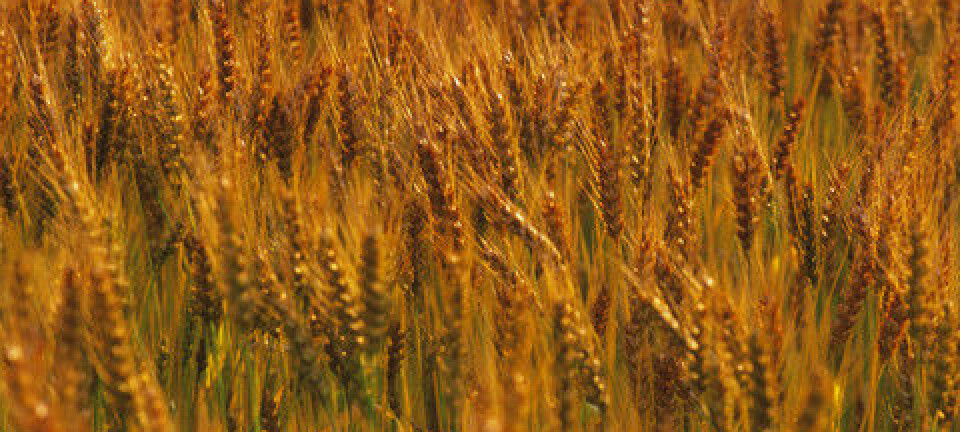This article was produced and financed by Norwegian Institute for Agricultural and Environmental Research

Fungus kills ticks
Ticks may be facing a dangerous fate. Researchers are hoping to determine whether fungus can kill ticks in sheep pastures. This would also benefit future hikers.
Denne artikkelen er over ti år gammel og kan inneholde utdatert informasjon.
Tick bites in sheep can lead to the disease tick-borne fever (TBF), which causes high fever and weakens the immune system. As a result of TBF, animals may become seriously ill from diseases they usually cope with.
Researchers are therefore conducting field trials where the aim is to reduce tick populations in sheep grazing areas by using a tick pathogenic fungus called Metarhizium.
Metarhizium occurs naturally in Norwegian soil and in the soils of many other countries worldwide where it has the potential to infect and kill ticks.
When living organisms or "natural enemies" of a pest are utilised in order to reduce pest population levels, this is known as biological control.
Killing ticks from inside

Ingeborg Klingen, Head of Section of Invertebrate Pests at Bioforsk Plant Health and Plant Protection Division, are currently conducting field trials with BIPESCO 5 which is a formulation of an isolate of the tick pathogenic fungus, Metarhizium.
“The fungus we are using in the trial is a natural enemy of insects and mites found in soil. What we do is to increase the natural fungal population by releasing it in large quantities. This type of biological control is known as augmentation biological control and is an alternative to chemical control”, says Klingen.
The death that awaits ticks exposed to this fungus, is inhumane; fungal spores land and germinate on the skin (cuticle) of the tick and then penetrate it before entering the tick body. The fungus then grows and proliferates inside the tick. During this growth, the fungus produces substances that are toxic and lethal to the tick.
The fungus continues to grow inside the tick until it fills the entire body. Thereafter it extrudes out of the tick again and forms new spores on the outside of the body, which can spread to new ticks.
Potential for recreational areas

If the application of Bipesco 5 against ticks in sheep pasture is successful, the areas of application could potentially also benefit hikers: “We receive many inquiries from private individuals, teams and organisations who wish to reduce the tick problem in their recreational and hiking areas.”
Klingen would like to do further research in this area, but needs to secure necessary project funds in order to finance a study. She sees a potential in using this biological control method in confined recreational areas, perhaps in combination with other measures.
“You could for example apply the fungus along trails and on islands with a great tick population. This is what our collaborative partner, the University of Innsbruck in Austria, is doing and they claim that the strategy seems promising”, says Klingen.
She would now like to see collaboration with other research environments in Norway to further examine this potential in Norway.
“In general, Bioforsk Plante Health has good knowledge of the control of insects and mites. We know a great deal about the tick’s biology and its natural enemies. In collaboration with the Norwegian Institute of Public Health and several other parties, we could use this knowledge in a strategy for the control of ticks - also in recreational areas.”
Included on the EU's positive list
BIPESCO 5, with the active ingredient Metarhizium, has been tested for toxicity in relation to animals and humans, and is on the EU's positive list for pesticides. Similar products are already for sale in most parts of the world. The trials that led to the quality assurance of the fungus and inclusion on EU’s positive list conclude that the persistence in the wild was acceptable after application. There were no other unacceptable adverse effects in the natural environment or on humans either.
According to Klingen, this could make it easier for the product to be approved for use in Norway.
“If we find that the BIPESCO 5 can be effective here at our low temperatures, then it is already in the clear with regard to any adverse effects to humans and the environment. Norwegian authorities have asked Bioforsk to identify how long the fungal isolate of BIPESCO 5 survives in the wild in Norway. Our researchers are therefore looking at how effective the fungus is against ticks, and also for how long it is present in the wild after having been applied as a biological control agent.
Now, all that remains is to see whether the fungus is effective and if it otherwise behaves acceptably here with us”, says Klingen.
Translated by: Siri Elise Dybdal

































